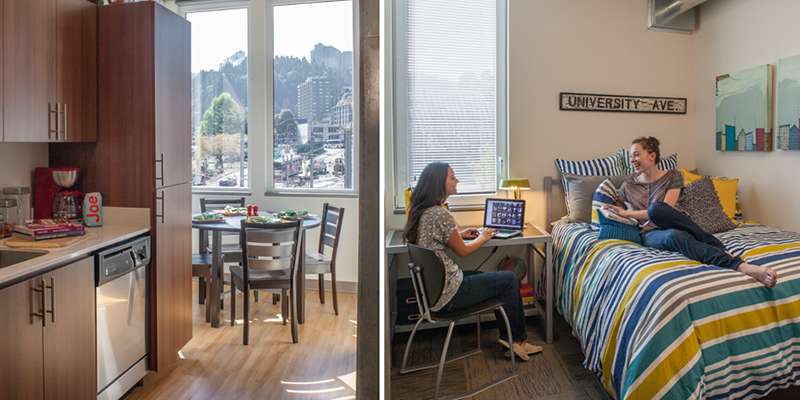In 28 years of consulting, we have seen about every market wave or cycle imaginable. Three cycles of law firm relocations; two rounds of hospitality renovations; and three cycles of healthcare renovations, but never in my career, have we witnessed the current boom in the building of university housing. At PlanNet, the firm is actively involved, or has recently completed, over 15 university housing projects nationwide within the last year alone. Some of these include projects at Princeton University, Central Florida University, Arizona State University, University of Southern California and Illinois State University.
What is interesting is why and how this market has developed. With two kids currently at University of California Campuses, and one recently graduated, we realize that to be competitive, most universities are trying to offer housing to all students over their four year college career. This is in contrast to what was happening many years ago. You were guaranteed housing for only freshman year and, after that, you were on your own. I spent one year in the dorms and three years in a very dirty, but wildly fun, fraternity house. However in present times, in order to attract the best students, universities have to offer many more student amenities, including guaranteed housing for four years. In addition, the quality of the housing has greatly improved. No longer do you get a prison cell type dorm room with a cafeteria and vending machines. Now university housing includes kitchens, living rooms, swimming pools, gyms and gaming rooms. Wireless and cell coverage with large bandwidth is an absolute requirement, since students rarely “plug in”.
Historically, housing projects were funded solely by the university. This was even tougher for public universities that were dependent on tax dollars and did not have large donor gifts. The difference now is that the private sector has recently gotten involved. Large publicly traded companies, such as American Campus Communities, are making millions either by separately developing, or jointly developing housing in conjunction with universities. They offer options to develop and manage the housing, or develop the housing and sell it to the university. These private development dollars are making it possible for universities to meet their housing goals and be more competitive. The big winners are the students, who now have a wide range of types of housing to choose from following their mandatory one year in the older campus dorms. The design and construction industries have also benefitted by the housing boom. This very new trend is a real testament to what private/public and private/private can accomplish if they work together.
Will this trend for luxury student housing last? With the number of universities in this country, I think it will last for at least the next five to seven years. After that, who knows? The market may be saturated at that point. The bottom line is that you need to ride the wave while it lasts. Student housing has turned out to be a pretty good sized wave.






